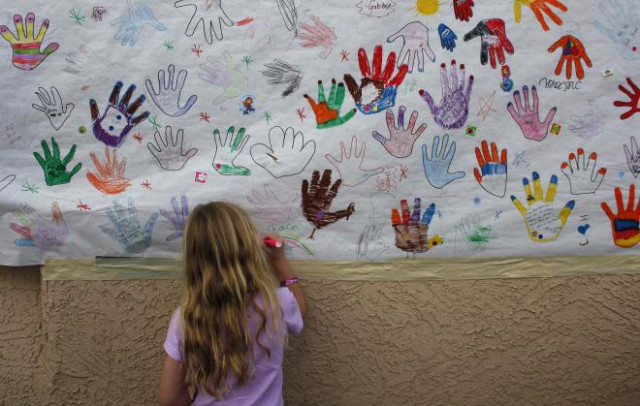Child therapy can help cure your child’s unheard anxieties
Many parents are reluctant to enter their children into therapy due to social stigma

PHOTO: REUTERS
According to Anum M Malik, a trained psychologist at Creative Counselling, if parents notice moderate to severe changes in their child – emotional or behavioural – they should seek help. Parents can although try and solve some specific issue themselves, such as disciplining an aggressive child. “However, if their methods are not working, it means a deeper issue may exist. It is also possible that parents are not using the right strategies or techniques and may need professional help,” says Malik.
Kate Middleton tackles children's mental health as HuffPo editor
The emotional or behavioural anomalies mentioned by Malik include:
- Mood swings or episodes of anger, aggression, anxiety, sadness or fear.
- Social isolation or decreased interest in previously enjoyed activities.
- Nightmares, depression or talk about hallucinations and suicide.
Moreover, if the observed emotional distress persists for a considerable period of time, disrupting daily functioning of the child and interferes with age-appropriate development (such as walking, talking, toilet training), it is time to consult a therapist. An article published in The NewYork Times in 2006, ‘Parenting as Therapy for Child's Mental Disorders’ explains that apart from therapy being a solution 75% of the time amongst children, it also provides an opportunity for parents to learn, under the guidance of a professional, the unique strategies to implement at home to support their child.
But many parents are reluctant to enter their children into therapy either due to social stigma or their lack of understanding about how it works. The traditional view of therapy as an interrogative meeting between a serious-looking doctor and their scared child is far from reality. Although, currently used cognitive behaviour method of therapy engages children directly to speak about their emotions, feelings and how to manage them, it differs from traditional couch-style talk sessions. It is more interactive, uses strategies such as role-play and asks parents to participate in a controlled environment. These family sessions go a long way to achieve the desired results.
As Anna Beth Benningfield, a Dallas psychologist and past president of the American Association for Marriage & Family Therapy, points out in an article for Psychcentral.com, “It’s not that kids can’t benefit from individual therapy, but not having the parents really limits what can happen,” she emphasises. “It also helps parents to hear their children talk about their concerns as parents are much more influential than the therapist. They’re going to be there after the therapist is gone. They’ll understand the child better,” she adds.
Overlooked: ‘Women with disabilities neglected’
Other than these, play, art and music therapy are all unique ways to understand a child’s emotional and mental state. They allow children a medium to express themselves and teach coping mechanisms in a non-threatening environment. Since these allow the child to explore his or her feelings in a natural setting, it becomes easier to reach deep down to the core problem without humiliating or frightening them. In fact, all of these pave the way towards greater self-control, esteem and creative thinking, allowing the child to reveal situations otherwise difficult to talk about or manage. These techniques help the child to relax and let go of the unmanageable emotions they find themselves stuck in.
As a play therapist, Malik believes play therapy works best when working with children. “Play is for children, while talking is for adults,” she explains, mentioning 10-year-old Salma’s experience who had lost her father. “Using clay, play dough, paint and colour, we worked through Salma's grief by allowing her to express her sadness in a safe and holding environment,” says Malik. Thirteen-year-old Haider too was suffering from depression, which was affecting his eating, sleeping, studying and social habits. In order to work through his emotions, they again used art. Paint and crayons helped him express his feelings. “As part of the process, Haider periodically drew how he viewed himself,” she adds.
“The reason I find art therapy groups to be an effective medium for therapy because children not only deal with emotional issues but also improve their social skills and feel like they are part of a larger group of their peers,” elaborates art therapist Shazia Mohamed.
Indian students walk barefoot on broken glass
However, it is essential to remove the stigma surrounding child therapy to make it more accessible and effective, automatically encourage trained therapists to step in. Initiative such as Taskeen, a collaboration project between Pakistan Association for Mental Health, CareForHealth, and Humanity Initiative are off to a great start. Spreading awareness through free-of-cost sessions at schools and communities can go a long way.



















COMMENTS
Comments are moderated and generally will be posted if they are on-topic and not abusive.
For more information, please see our Comments FAQ